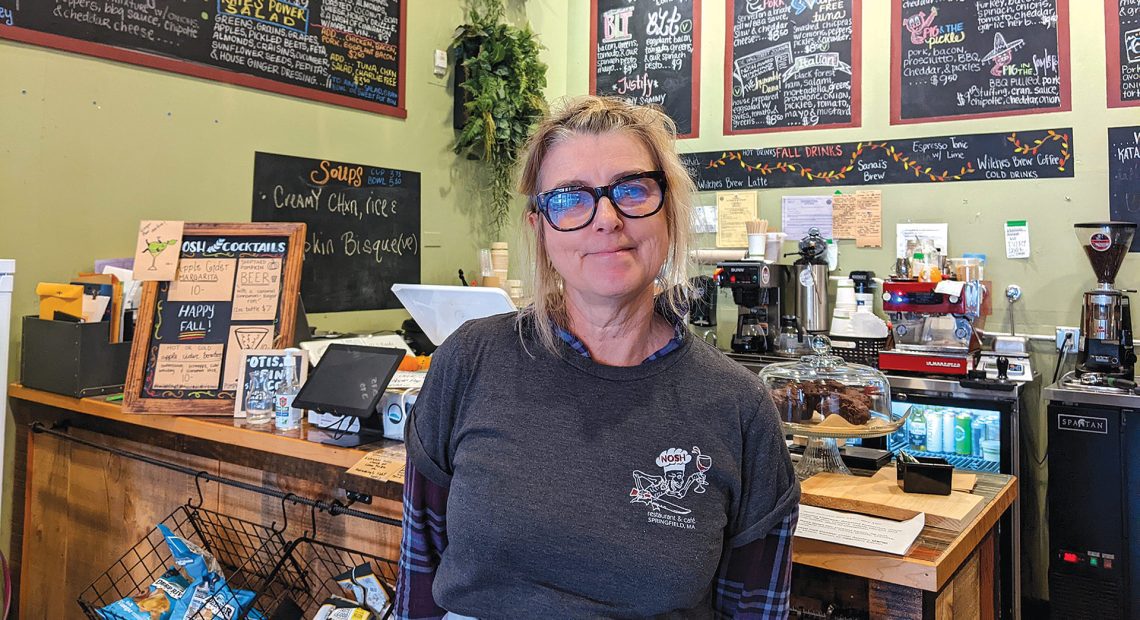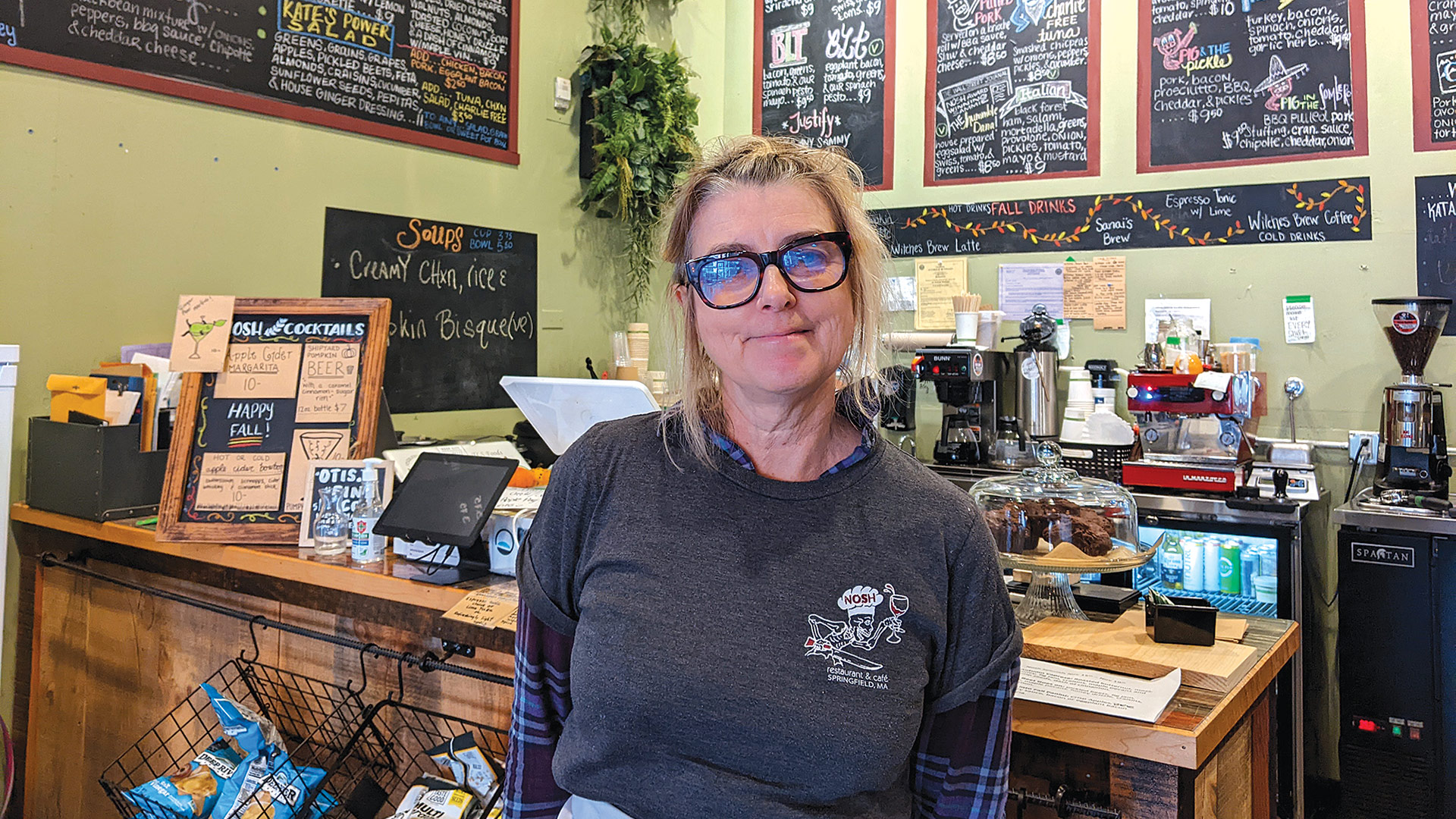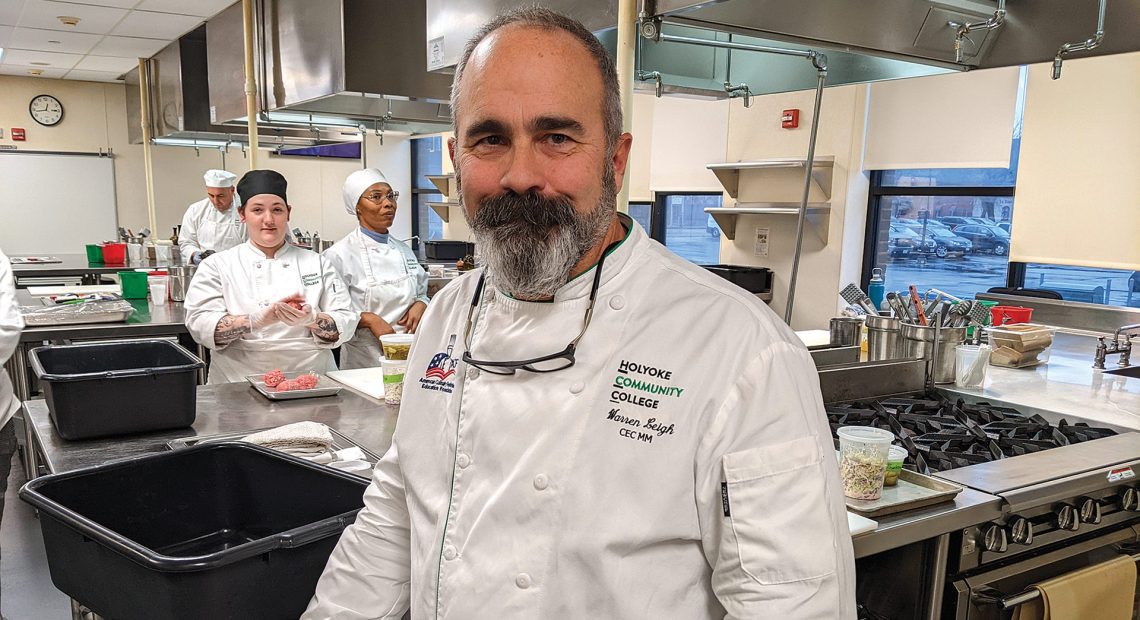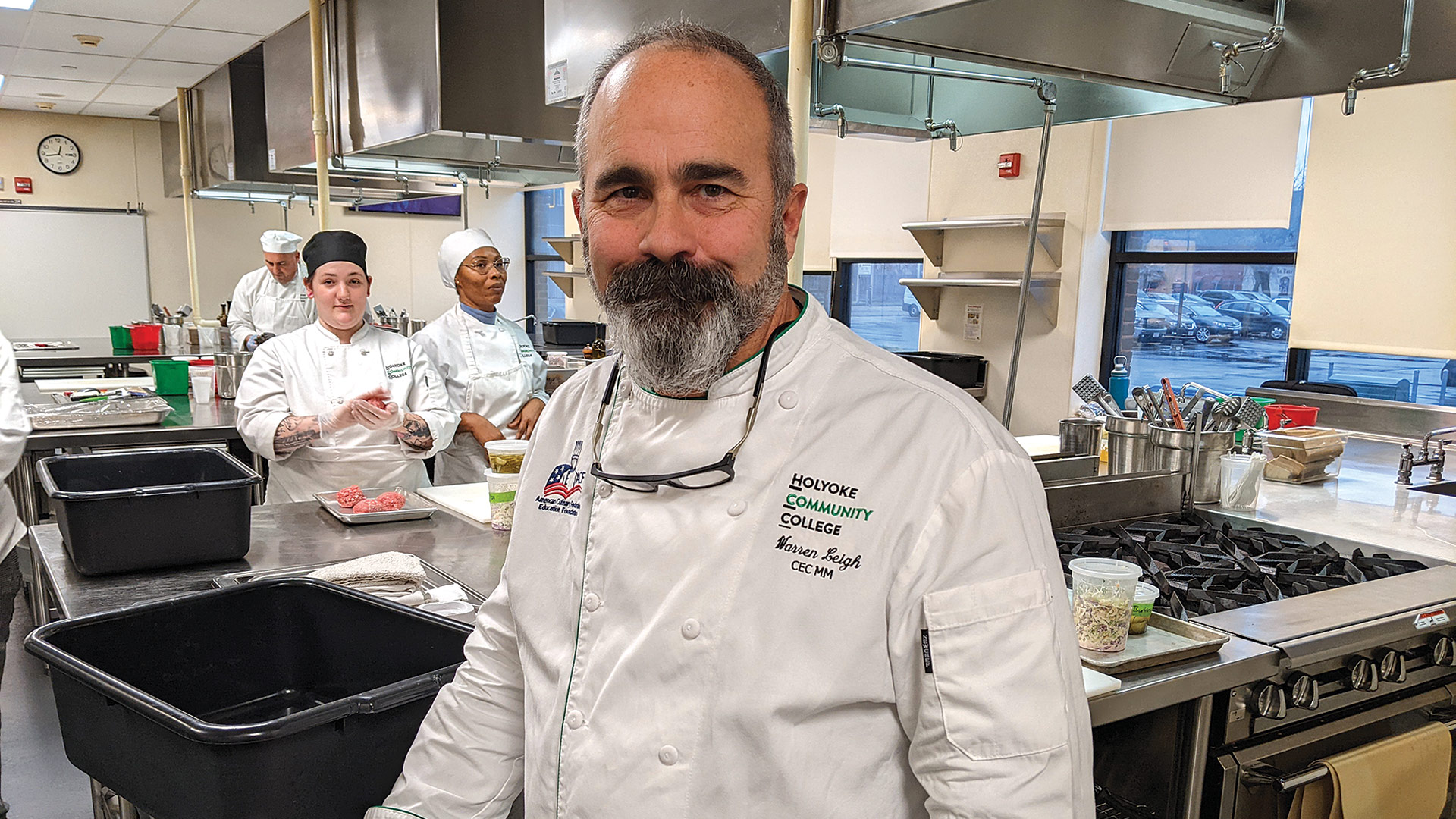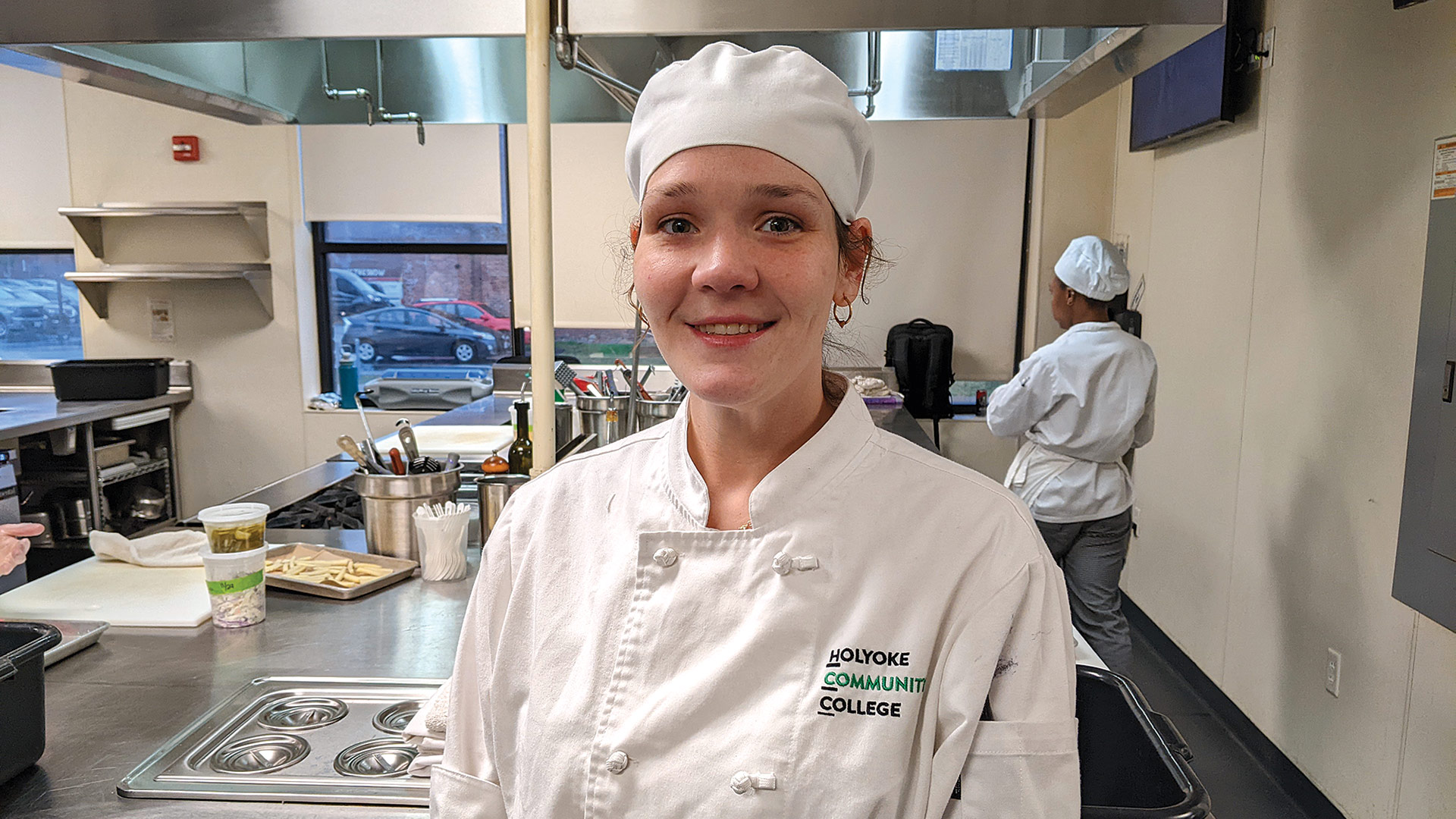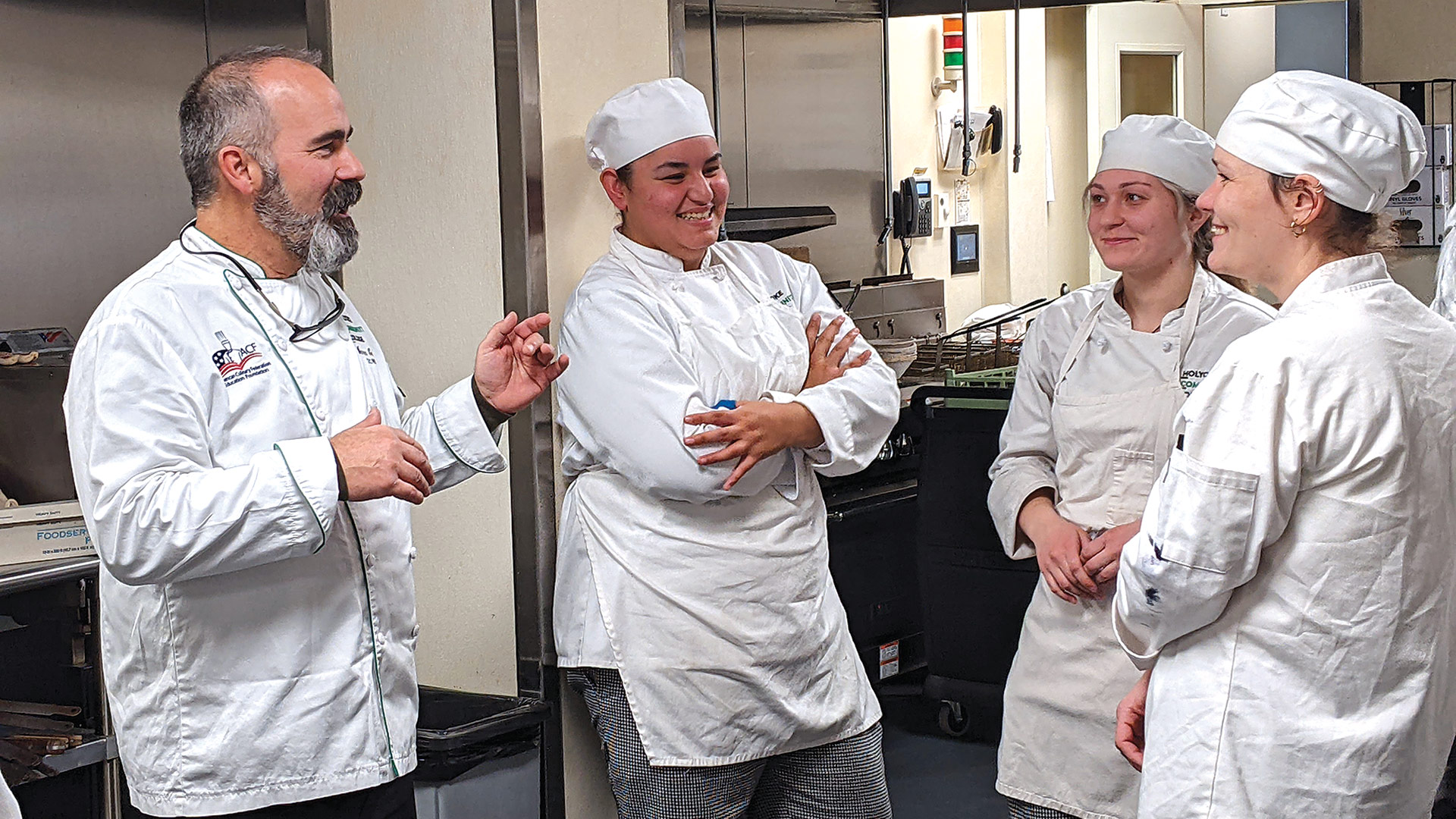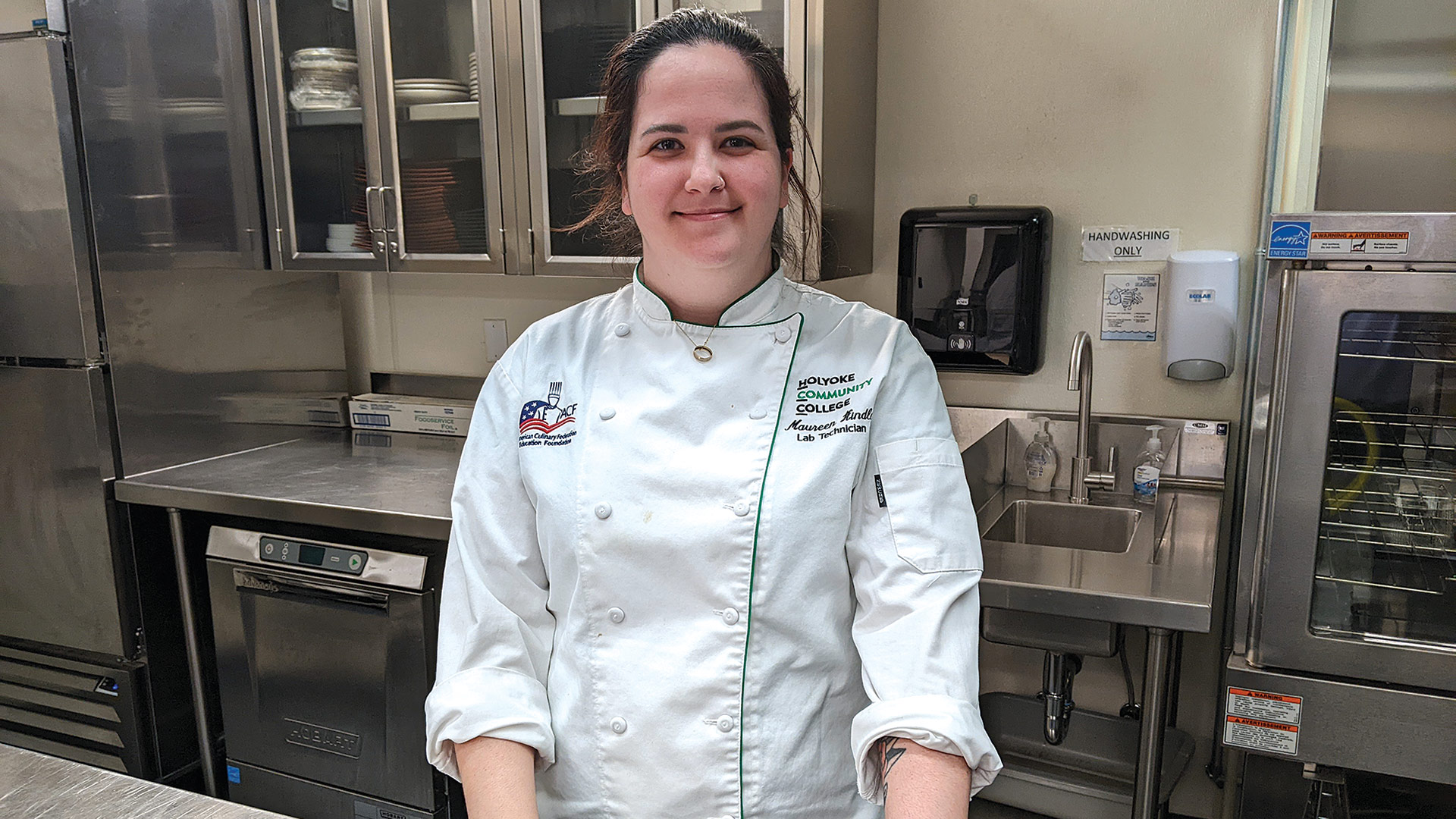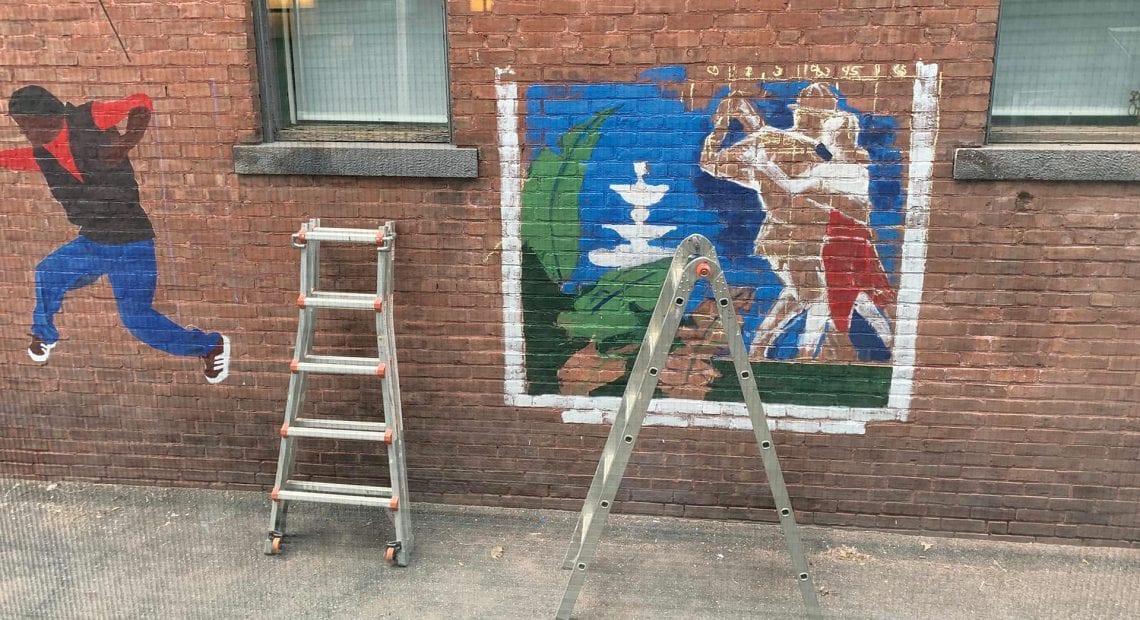Fried and True
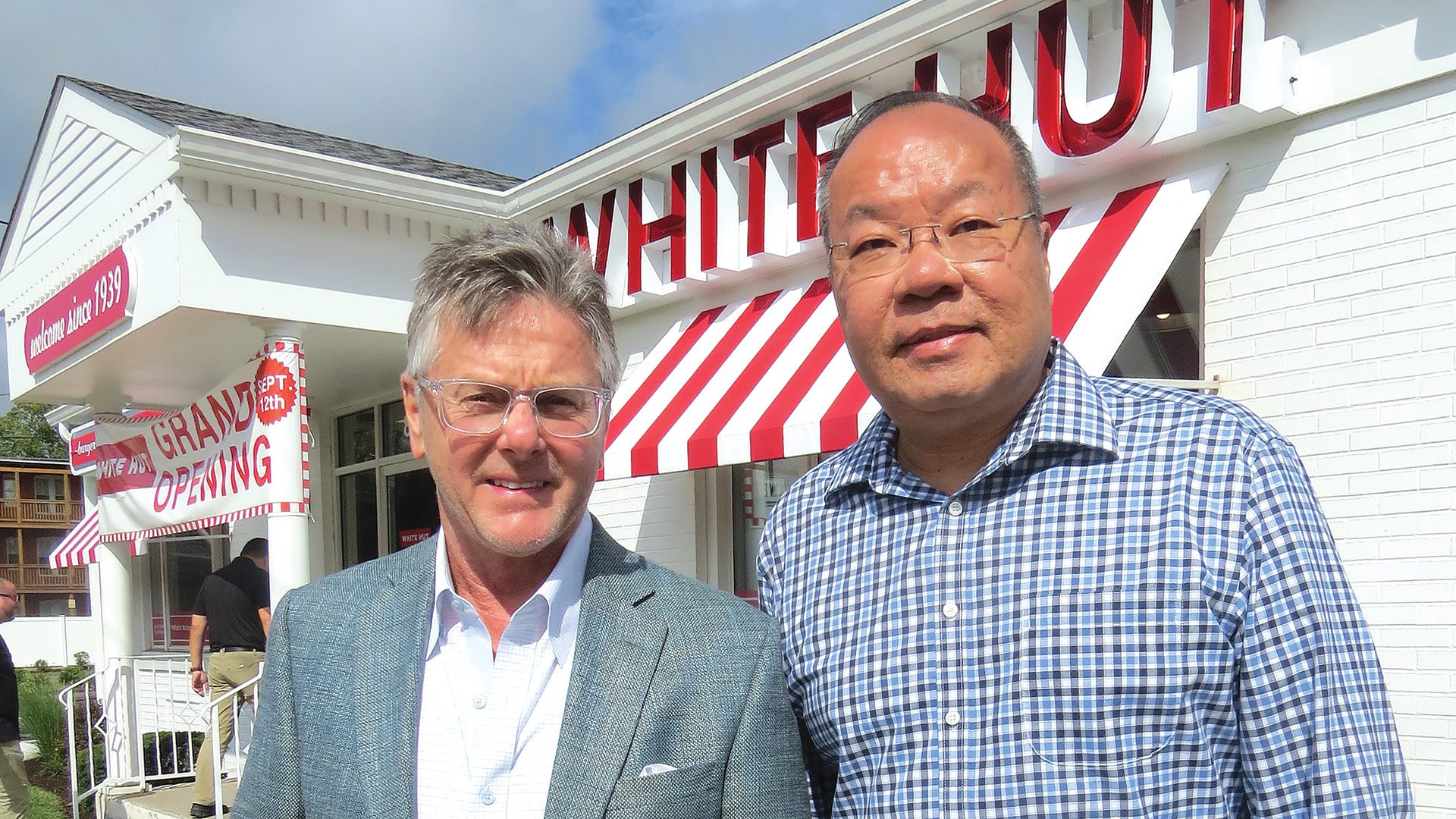
Peter Picknelly, left, and Edison Yee, two of the many partners involved with the White Hut location in Holyoke.
When asked about where they might take the White Hut brand — and when, both Edison Yee and Peter Picknelly took long pauses and then looked at each other as if to say, ‘you first.’
They did so to indicate a few things — first, that they’ve obviously been thinking long and hard about that question, and second … they don’t really know the answer yet.
What they do know is that they will bring the concept beyond Memorial Avenue in West Springfield, the location that was rescued in 2020 by Picknelly, chairman of Peter Pan Bus Lines; Andy Yee, Edison’s brother; and others within the Bean Restaurant Group after founding owners the Barkett family announced it would close. And also beyond 825 Hampden St. in Holyoke, the location — a renovated former PeoplesBank branch — that opened last month.
“Our goal is to build a microbrand from this White Hut concept,” he said, using that term to describe brands with up to 10 locations, adding that locations are being scouted in Westfield and other communities, and if all goes well in Holyoke, there could easily be another location within a year.
Picknelly concurred. “We believe the White Hut is a brand that’s scalable; we’ve had overwhelming success in West Springfield — our customer count continues to grow there — and we think Holyoke is a great location,” he said. “This a solid brand, and we want to expand it out strategically.”
But both said that, at the moment, they and several co-owners in the Paper City venture, including Holyoke natives Jack Ferriter and Mark Cutting, are hard-focused on that location, the success of which might go a long way toward determining where and when this iconic (yes, that word fits here) brand and its red-and-white color scheme might next be seen.
Nathan Yee, director of Hospitality for the Bean Restaurant Group and part of the proverbial next generation of leadership at the company, believes it will do quite well.
“Our goal is to build a microbrand from this White Hut concept.”
Those involved spent considerable time scouting locations, he said, and eventually zeroed in on the Hampden Street location, which lies on a well-traveled road just a few hundred yards from an I-91 exit.
Beyond location, this site offers … well, everything that has made the White Hut brand iconic — its famous hamburgers, hot dogs, fried onions, shakes, and more — as well as new additions, including a salute to Holyoke: a breakfast sandwich called the Paper City Special, containing a scrambled egg with sausage, hash brown, American cheese, and fried onions on a Venetian water roll.
There are other new wrinkles as well, including a self-ordering kiosk for those who prefer that option, as well as a pickup option by which employees bring the customer’s order directly to their car.
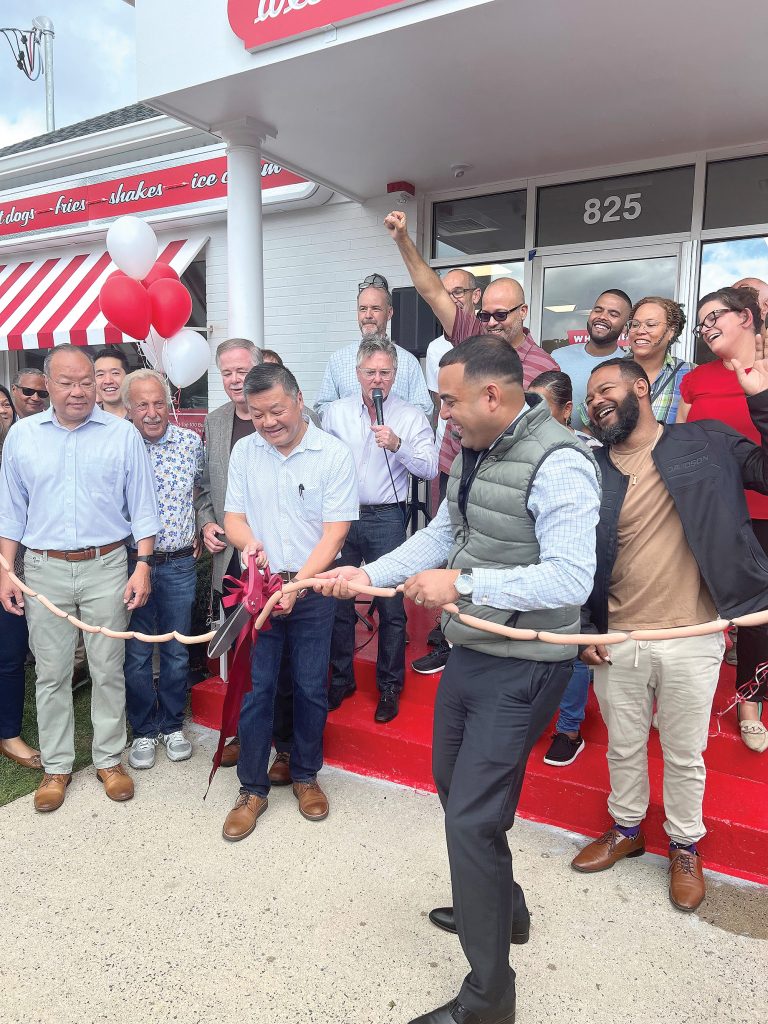
Nick Yee cuts a ceremonial ribbon of hot dogs at the grand opening of the Holyoke White Hut last month.
In short, the ownership group is taking a brand that has a storied past and a rich history and bringing it into the future — changing what should be changed, and not changing anything that shouldn’t be changed, like those fried onions.
For this issue, BusinessWest takes an in-depth look at the institution that is the White Hut, the long-planned move into Holyoke, and those still-evolving plans to bring the brand elsewhere within the 413 — and likely beyond.
Relishing the Possibilities
As he talked with BusinessWest in mid-September, Edison Yee had a lot on his plate — and yes, that’s an industry term, sort of.
The Big E was going to start in a few days, and Yee and many others at the Bean Restaurant Group had considerable prep work to do get ready; the group has several locations at the fair, including the White Hut, the Wurst House, and a new addition to the portfolio, a ‘Harpoon Beer hut.’
“We sell a lot of food and lot of beer,” he said, adding that the company probably has 100 or more seasonal employees working at the fair, which has been an ever-increasing part of the business plan for the group since it first started taking part eight years ago.
Meanwhile, Oktoberfest, a huge, nearly month-long celebration at the Student Prince, is coming up fast (Oct. 8 is the official start date), and Yee was deep into the planning stages for that annual happening. And then, there’s ongoing planning and the start of work at the restaurant that will become a linchpin of the redevelopment of the Court Square Hotel on Elm Street in Springfield, another collaboration between Picknelly and the Bean Group.
But on this day, and the days before, the main focus was on the Holyoke White Hut location and making sure everything was in order for the grand opening coming up the next morning. This was an event that was maybe two years in the making, said Yee and Picknelly, noting that, not long after the West Springfield location had been saved and was successfully navigating its way through COVID, talk began to turn to where this iconic brand might go next.
And it wasn’t long at all before the focus turned to the Paper City.
But before we explore this move to Holyoke, we need some background, and some perspective on both the brand and the location in West Springfield, which, to many, has achieved landmark status, figuratively if not literally.
Our story begins in 1939, when Edward Barkett opened a small restaurant on Memorial Avenue and decided to call it the White Hut because that was the principal color.
Suceeding generations of the Barkett family owned and operated the restaurant and eventually took the brand beyond West Springfield — to Amherst, in a venture that met with only limited success, in part, Picknelly believes, because the location was not highly visible.
And while the brand is famous for the loyalty exhibited by its regulars, location and visibility are keys to the success of any restaurant, he went on.
Fast-forwarding a little, E.J. Barkett (Edward’s grandson) announced rather abruptly in 2020 that White Hut would close its doors. Picknelly and Andy Yee, both to be counted as Hut regulars, as well as serial entrepreneurs and part of the group that rescued the Student Prince restaurant in 2015 when its closure seemed imminent, stepped into the breach and saved the White Hut.
And they did so under extreme circumstances. Indeed, that rescue came at the height of COVID, when that restaurant, like all others, had to find ways to do business while also keeping people safe. It already had effective takeout service, said Picknelly, adding that this quality was one of many that enabled it to persevere during those trying times.
Another quality, obviously, was the food itself, he said, adding that another ingredient in the recipe for success was simply not to change much of anything that had made the Hut such a fan favorite.
Such diligence has been rewarded with rankings on a number of ‘best burger’ lists. In 2021, for example, White Hut’s cheeseburger with grilled onions was named the best burger in Massachusetts by Thrillist, and it has been ranked among the best burgers in the country. The Hut was profiled in USA Today in 2019, which said everything about the brand is “frozen in time,” and it’s been included by the Wall Street Journal in its “Essential Guide to America’s Best Burgers.”
That success begs the obvious question — where can this brand go? That query refers to everything from geography to the size of what would have to be called an emerging chain.
A Side of Entrepreneurship
The answer to that question begins in the Paper City and the opening of the Hampden Street location, which provides evidence that everything is no longer entirely frozen in time, as we’ll see.
“Holyoke has been on the radar for our group for a long time now,” Edison Yee said, adding that several potential sites were considered before the Hampden Street location, one strongly favored by his brother, Nick Yee, the group’s principal managing partner, became the focus of attention.
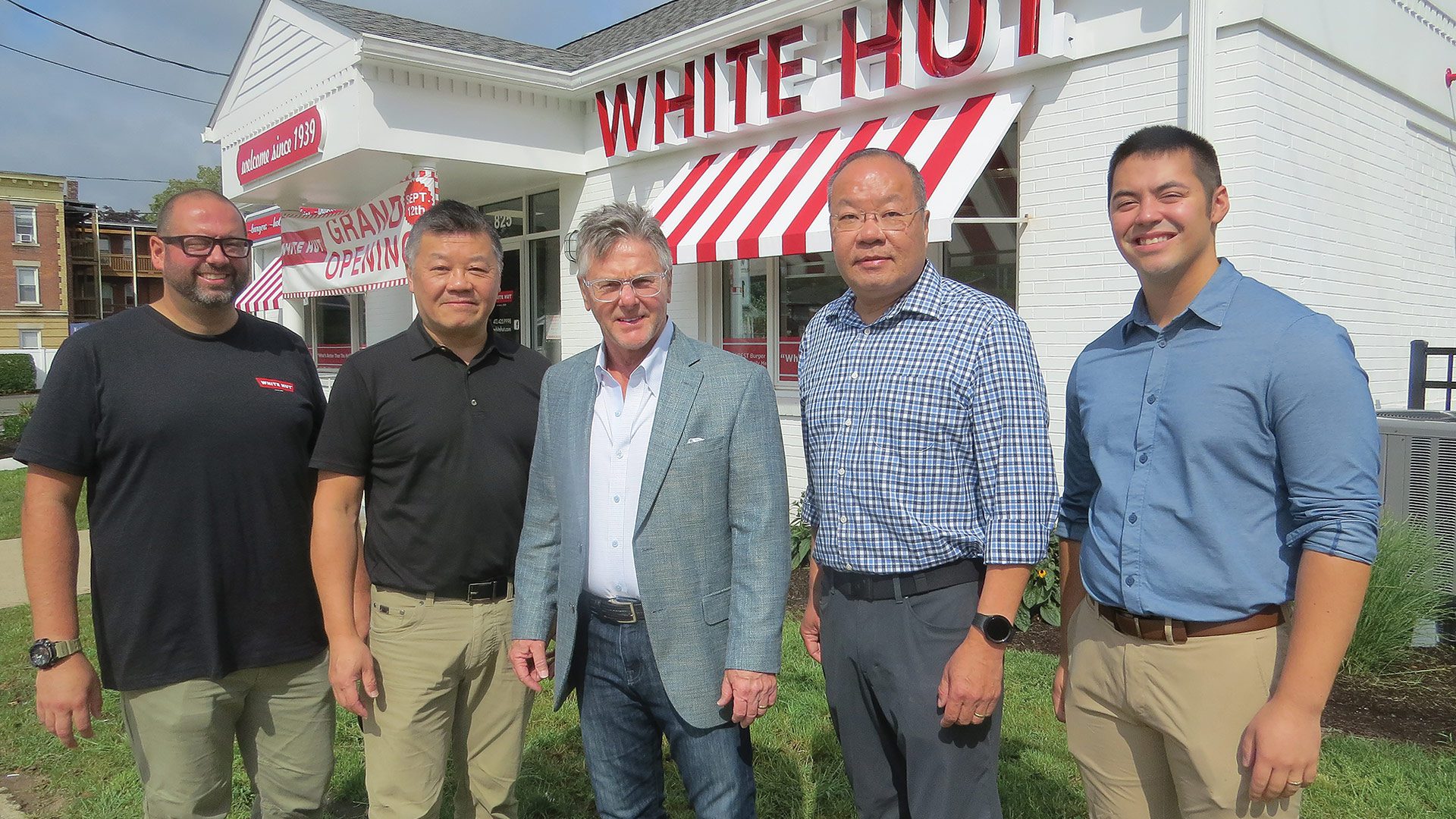
From left, Bryan Graham (culinary director and partner), Nick Yee, Peter Picknelly, Edison Yee, and Nate Yee stand in front of the latest White Hut location in Holyoke.
“The traffic counts are great,” he said. “And, growing up in South Hadley, we knew that this was the main street to get onto I-91; you have all the traffic that comes from South Hadley, Granby, parts of Chicopee, and, of course, Holyoke, that are filtering through this road.”
Picknelly agreed, and noted that the traffic count is actually higher on Hampden Street than it is on Memorial Avenue in West Springfield.
Beyond steady traffic, the location provides more convenience to those who travel down I-91, Route 5, or other roads to get to the West Springfield location (and there are many in that category) while also introducing the brand to new audiences.
“We think Holyoke is a great location,” Picknelly said. “Our brand is still strong here, yet it’s far enough away that we won’t be competing against ourselves, and our customers from Holyoke, Northampton, and Granby won’t have to travel as far — that’s the essence of it.”
And while the location is expected to draw people from several area communities and, its owners presume, travelers on I-91, it is a neighborhood restaurant, one that will in some respects replace another iconic eatery, Mel’s Restaurant, which closed recently, just a few hundred feet away.
The location will offer the same menu as the one in West Springfield — and essentially the same food the Hut has offered since 1939 — but with some of those new amenities, such as the self-ordering kiosk, said Nathan Yee, which will bring another layer of convenience to customers.
“With each unit, we’ve identified some of the operational areas that we can improve on, and that’s what we’ve done with this location,” he said. “We’ve added a few new features to make it more customer-friendly.”
Renovation of the former bank branch took more than a year, he noted, and an investment, beyond the purchase of the property, of more than $1 million.
And this may the first of several initiatives to bring the White Hut brand to different cities, towns, and markets, said Picknelly and Edison Yee, noting, again, that Holyoke will be a barometer of sorts for how well the brand may ultimately travel.
“Our ultimate goal is to expand the brand,” Yee said. “This is a great test for us, being in Holyoke, and we feel strongly that, if we can get this unit to operate similarly to West Springfield in terms of metrics, we’re eager to look for another spot.”
Picknelly agreed, noting that expansion, either through owner-operated locations, such as those in Holyoke and West Springfield, or perhaps franchising, is likely if not inevitable.
“There are restaurant groups in Connecticut that have contacted us and want to franchise,” he said. “We want to expand this on our own first; we think it’s really scalable — this is our first venture to do that. Once this gets up and running, I think you’ll see the White Hut brand all over the Northeast.”
“Our ultimate goal is to expand the brand. This is a great test for us, being in Holyoke, and we feel strongly that, if we can get this unit to operate similarly to West Springfield in terms of metrics, we’re eager to look for another spot.”
Elaborating, he said could envision scenarios where there are both owner-operated locations and franchises, and there are plenty of successful models of such operations, including national brands such as KFC, Burger King, and others.
Food for Thought
Summing up the current state of this brand, Picknelly said it’s “one that the Barkett family built and the Yee family made better.”
Where can it go beyond West Springfield and Holyoke? Only time will tell, but it’s safe to assume that expansion will continue across Western Mass. and perhaps beyond. A brand that’s been called ‘simple,’ ‘tried and true,’ and, yes, ‘frozen in time’ will continue to be all those things.
But time certainly won’t stand still for the White Hut and its owners.




